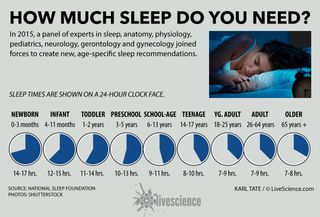Sleep is an essential part of our overall well-being. It plays a vital role in maintaining good physical and mental health. Adequate sleep is particularly important during different stages of life. In this article, we will discuss sleep guidelines for different age groups to ensure an optimal sleep routine and quality rest for everyone.
Infants (0-3 Months)
Newborns require a significant amount of sleep. On average, they sleep around 14 to 17 hours per day, evenly distributed throughout the day and night. Establishing a sleep routine can be challenging during this stage, but it is crucial for their development. Here are some tips:
Provide a comfortable and safe sleep environment.
Follow a consistent bedtime routine.
Put your baby to sleep on their back to reduce the risk of Sudden Infant Death Syndrome (SIDS).
Ensure the room is dimly lit and noise-free.
Infants (4-11 Months)
During this stage, infants still need a good amount of sleep, with an average of 12 to 15 hours per day. They start establishing a more structured sleep pattern. Here’s what you can do to help:
Continue providing a comfortable sleep environment.
Follow a consistent bedtime routine.
Encourage self-soothing techniques.
Avoid nursing or rocking your baby to sleep.
Toddlers (1-2 Years)
Toddlers require around 11 to 14 hours of sleep per day. Their sleep patterns become more consolidated, with most of their sleep occurring during the night. To ensure quality sleep for your toddler:
Establish a consistent sleep schedule.
Encourage regular naps during the day (1-3 naps).
Create a comfortable and soothing bedtime routine.
Promote a quiet and calming sleep environment.
Preschoolers (3-5 Years)
Preschoolers need 10 to 13 hours of sleep per day. Their sleep patterns stabilize further, and they may outgrow daytime naps. To help preschoolers get the rest they need:
Maintain a consistent sleep schedule.
Encourage a wind-down period before bedtime.
Avoid stimulating activities close to bedtime.
Ensure a comfortable sleeping environment.
School-Age Children (6-13 Years)
Children in this age group require 9 to 11 hours of sleep per night. As they become more involved in school and extracurricular activities, it becomes crucial to prioritize their sleep. Here’s what you can do:
Set a consistent sleep schedule, including weekends.
Encourage a relaxing bedtime routine.
Limit screen time close to bedtime.
Create an optimal sleep environment (cool, dark, and quiet).
Teenagers (14-17 Years)
Teenagers still require a good amount of sleep, around 8 to 10 hours per night, although their sleep patterns may shift due to puberty and school-related stress. To promote healthy sleep habits:
Encourage a consistent sleep schedule.
Limit stimulants like caffeine and electronic devices.
Teach stress management techniques.
Ensure a comfortable sleep environment.
Adults (18-64 Years)
Adults generally require 7 to 9 hours of sleep per night. However, individual sleep needs may vary. To enhance sleep quality as an adult:
Maintain a consistent sleep schedule.
Create a relaxing bedtime routine.
Avoid heavy meals, alcohol, and caffeine before bed.
Create a comfortable sleep environment.
Elderly Adults (65+ Years)
As we age, our sleep patterns may change. Older adults typically need 7 to 8 hours of sleep per night. However, factors like chronic conditions and medications can affect their sleep. To promote healthy sleep in elderly adults:
Establish a regular sleep schedule.
Encourage daily physical activity.
Create a relaxing bedtime routine.
Ensure a suitable sleep environment.
Conclusion
Following sleep guidelines specific to each age group is crucial for maintaining optimal health and well-being. By prioritizing sleep and implementing healthy sleep practices, individuals at every stage of life can enjoy the benefits of a good night’s sleep. Remember, making quality sleep a routine is an investment in yourself and your loved ones’ long-term health.




